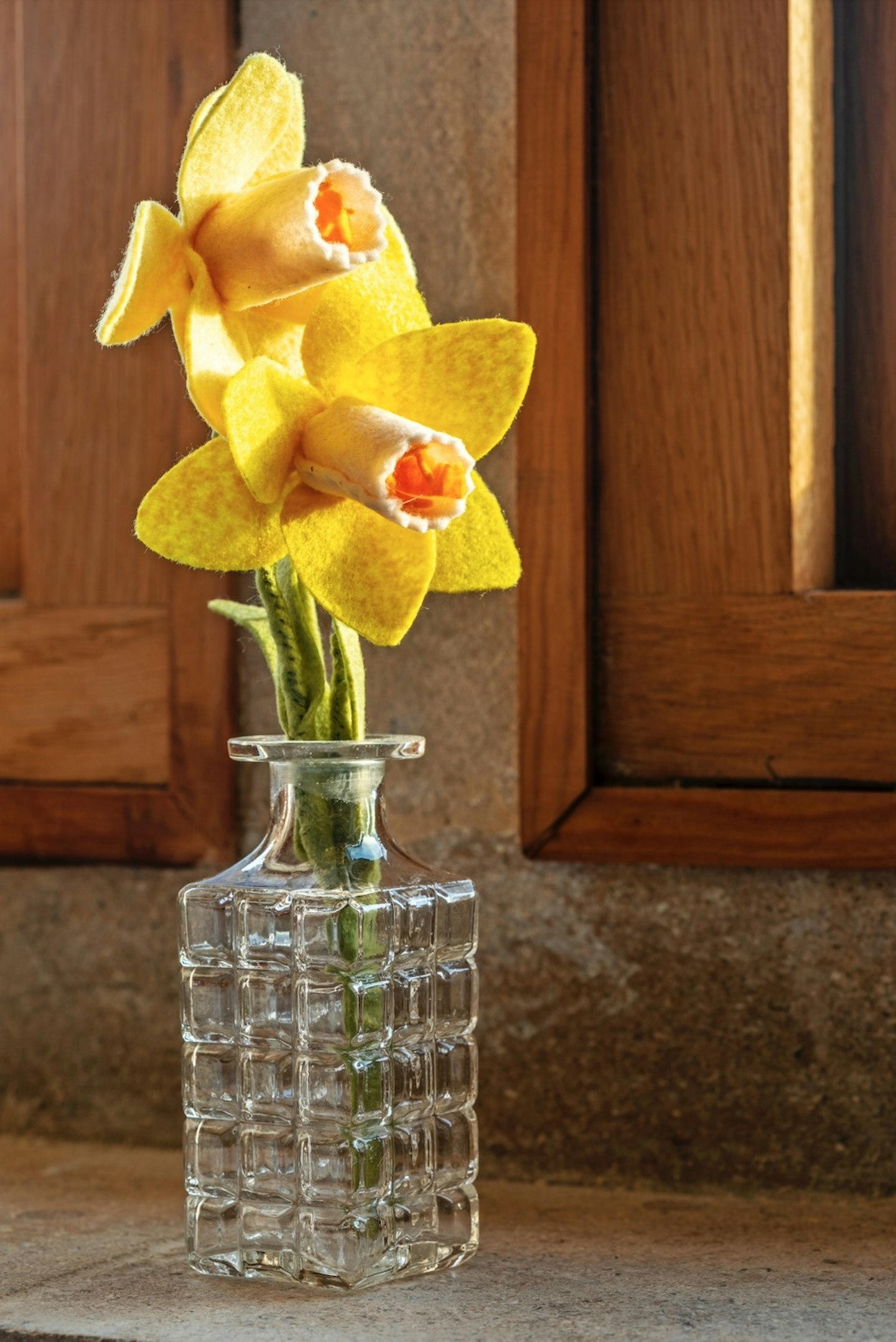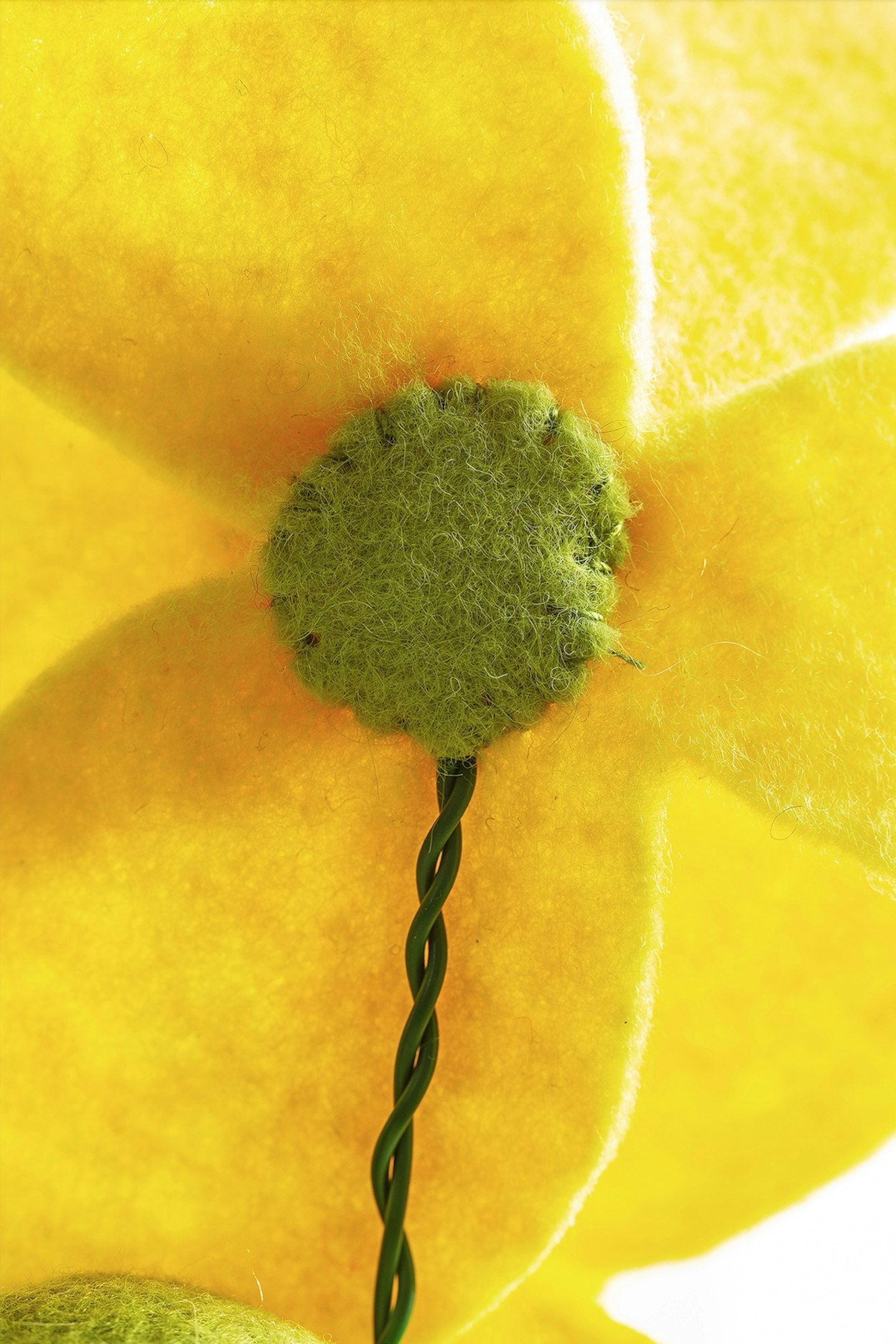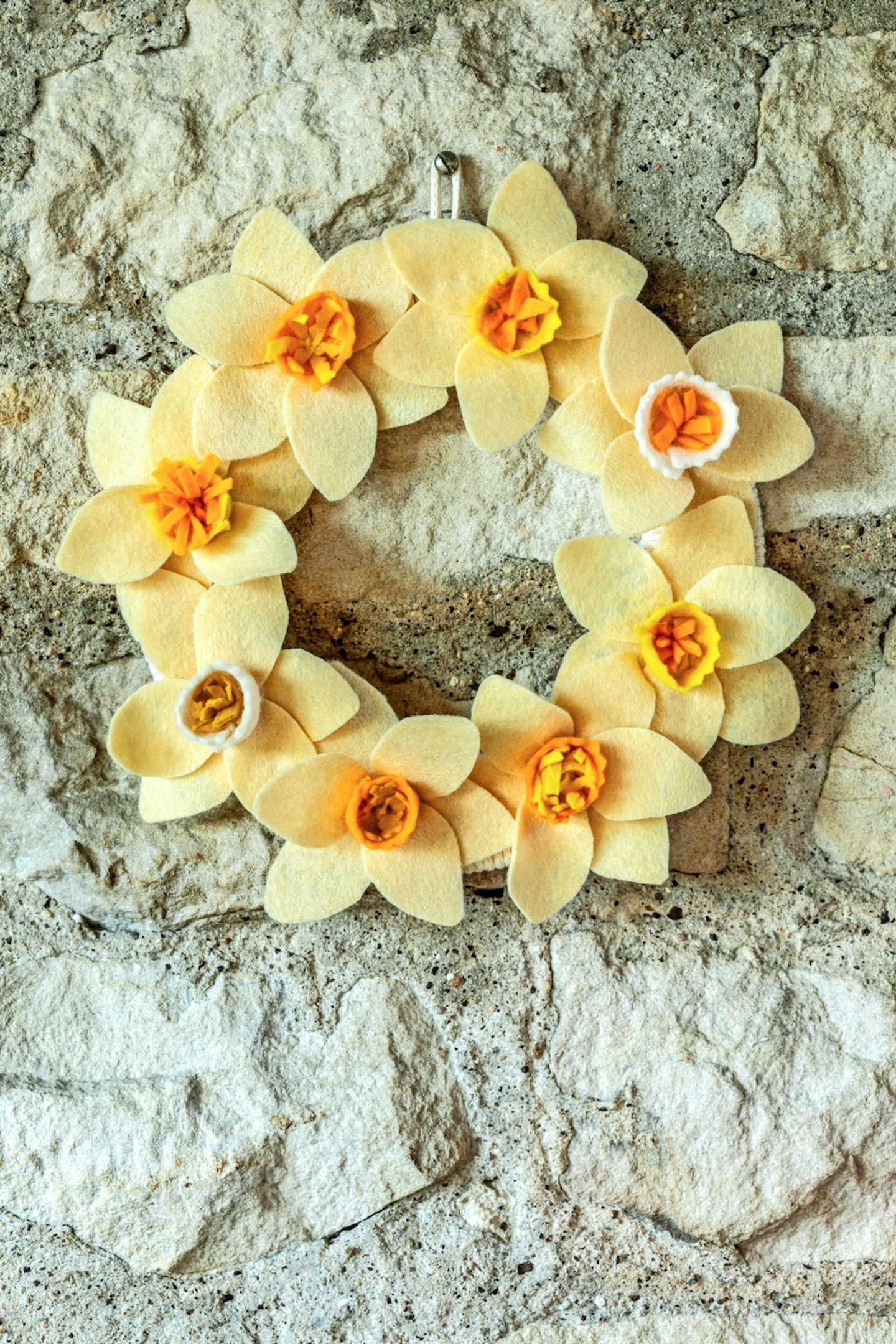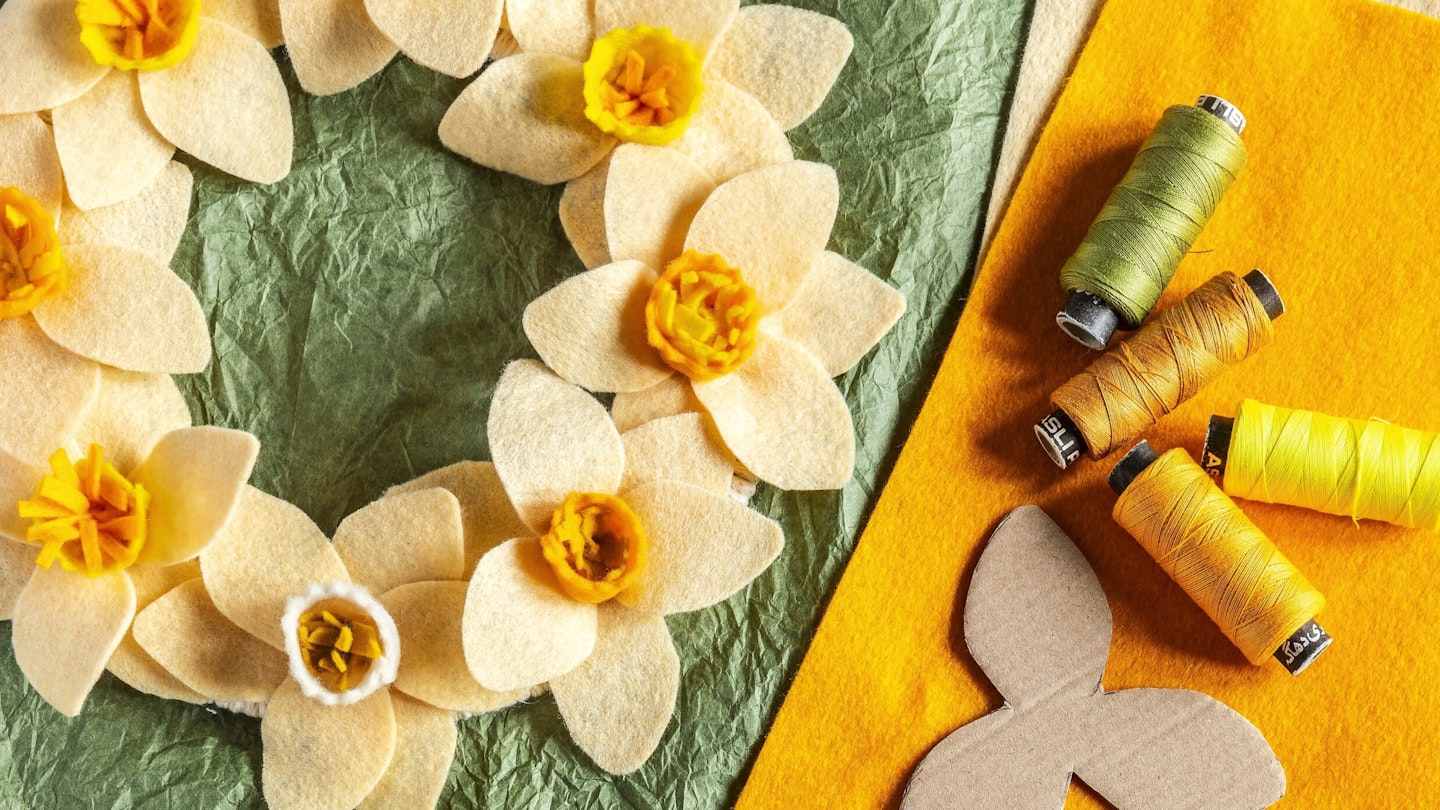Bright, starry daffodil blooms fashioned from felt make lasting bouquets and wreaths to adorn the home
The joyful trumpets of nodding daffodils in golden hues are the epitome of spring. Fashioned from felt, these cheery blooms bring the vibrant colours of the season into the home and make a lasting display that can be enjoyed again and again. Each flower is made individually, then attached to a green stem, to place in a glass vase or vintage bottle to be admired, or joined together to create a timeless spring wreath.
Materials
• Felt in green and various shades of yellow
• Scrap cardboard, such as an old box
• Pen or pencil
• Sharp scissors and pinking shears
• Needle
• Yellow cotton and green cotton
• Lengths of thin wire, such as florist’s wire
• Glue

To make a single flower, two sets of three petals are cut from yellow or cream felt using a cardboard template. One of the felt shapes is placed on top of the other, so that the petals are staggered, and the two sewn together in the middle.
To make the trumpet, a 23/4in by 1in (7 x 3cm) oblong of felt, in a different shade of yellow to the petals, is cut. One long edge is trimmed, using pinking shears or by hand, to make a decorative edge. The oblong is then folded round to create a tube, with the overlapping edges sewn in place by a short line of running stitch. A second line of running stitch is sewn around the plain end of the tube, just shy of the edge. The loose ends of thread are then pulled tight and tied, to gather in the bottom of the trumpet.
The stamen is added by cutting three short lengths of orange or yellow felt, with a straight or decorative edge, then overlapping and sewing them together in the centre to make a star. A similar effect can be achieved by rolling a small rectangle of felt tightly, with a deep fringe cut on one long side, and sewing the coil together on the other. The fringe can be folded out and the base of the coil sewn inside the trumpet. The bottom of the trumpet is then sewn onto the centre of the petals. Experimenting with the dimensions of the trumpet, and the number of strips used to make the stamen, will create smaller or more fulsome flowers, giving each one its own character.
Attaching a stem

To create the stem, a piece of wire is cut to the desired length. A narrow strip of green felt is cut 1in (2.5cm) shorter than the wire and wrapped, lengthways, around it. The two long edges are then sewn together with matching green thread, encasing the wire tightly within the felt. The exposed 1in (2.5cm) of wire is then bent over at the top and twisted to create a loop, which is sewn to the back of the flower. For neatness, a small circle of felt can be sewn over the loop to cover the join between the wire and the back of the flower. To add leaves, long sword-like shapes are cut and sewn firmly to the bottom of the stem.
Spring daffodil garland

A wreath is made by cutting a hoop of cardboard from an old box and attaching felt flowers around it by stitching or gluing them in place. The petals of each flower are overlapped to ensure the cardboard backing is not visible. Here, the petals are the same colour, creating a harmonious effect, with varied and contrasting trumpets and stamen to add texture and interest. Creating petals from a brighter felt or in alternating colours will result in a more vibrant wreath.
Daffodils, That come before the swallow dares, and take The winds of March with beauty
William Shakespeare, The Winter’s Tale
Project: Rachel Hawkins; Photography: Richard Faulks
1.
Subscribe today!
Take out a LandScape subscription
LandScape brings the fresh air of the British countryside into your home. With a mix of beautiful photography and in-depth features, it captures the very best of every season, from stunning landscapes and places to visit to the best of British traditional cookery and crafts. Choose the right Subscription offer for you… Receive 12 issues with free UK delivery to your door with a Print Subscription. Get easy access to the digital issues, Member-only rewards and more by taking out a Digital Subscription or choose a Print + Digital Subscription and get everything included.

